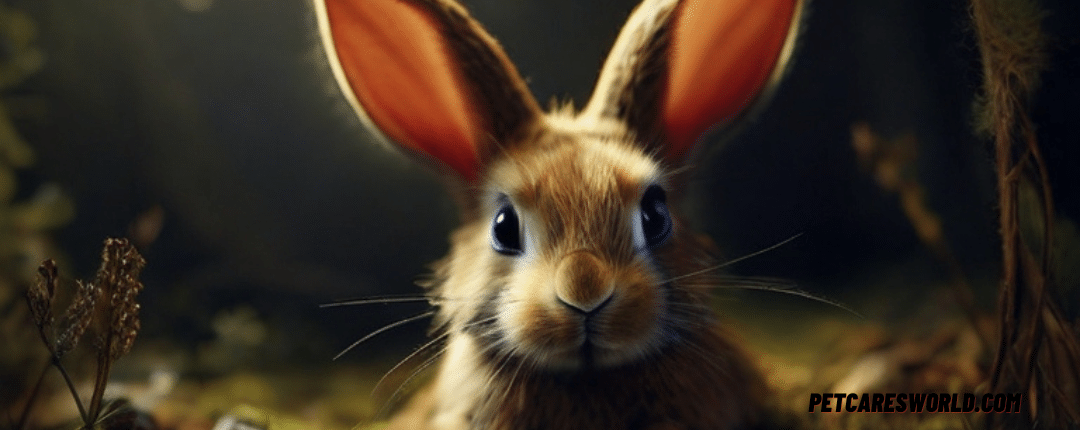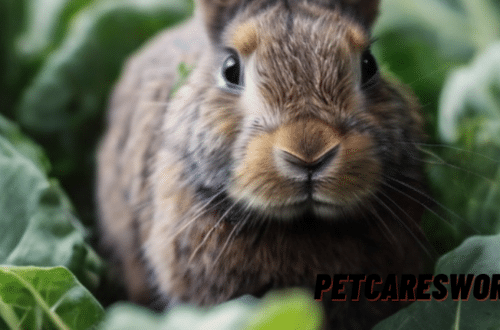In the realm of nocturnal animals, the question Can rabbits see in the dark? often arises. Rabbits, known for their twitching noses and long ears, possess intriguing visual abilities that enable them to navigate various environments, including dimly lit conditions. Understanding the nuances of rabbit vision sheds light on their fascinating adaptation mechanisms and behaviors.
Unveiling the Mysteries of Rabbit Vision
Rabbit vision is a subject of curiosity for many animal enthusiasts. While they are not strictly nocturnal creatures like owls or bats, rabbits exhibit crepuscular behavior, meaning they are most active during dawn and dusk. This behavioral pattern hints at their ability to function well in low light conditions, prompting inquiries into the specifics of their visual capabilities.
The Anatomy of Rabbit Eyes
To comprehend how rabbits perceive their surroundings, it’s essential to delve into the anatomy of their eyes. Rabbits possess large, protruding eyes positioned on the sides of their heads, providing them with a wide field of view. Their eyes contain predominantly rod cells, specialized photoreceptor cells that excel in low-light conditions, suggesting adaptation for dimly lit environments.
Understanding Rodent Night Vision
Rabbits, being crepuscular animals, rely heavily on their night vision to forage for food and evade predators during twilight hours. Unlike humans, who primarily rely on cone cells for color vision in bright light, rabbits prioritize rod cells for detecting motion and shapes in low light. This adaptation allows them to efficiently navigate their surroundings while minimizing the risk of predation.
Factors Influencing Rabbit Night Vision
Several factors influence the effectiveness of rabbit night vision. Environmental conditions such as moonlight intensity and ambient illumination play crucial roles in determining the clarity of their vision. Additionally, genetic variations among rabbit breeds may influence the density of rod cells in their retinas, affecting their ability to see in the dark.
Behavioral Adaptations for Low-Light Vision
Rabbits employ various behavioral adaptations to optimize their night vision capabilities. Their crepuscular activity patterns coincide with periods of decreased predator activity, reducing the likelihood of encountering threats in the dark. Furthermore, rabbits exhibit behaviors such as thumping their hind legs to alert others of potential dangers, enhancing their overall survival in dimly lit environments.
Enhancing Rabbit Care Through Understanding

Understanding the intricacies of rabbit vision is crucial for providing optimal care and welfare to pet rabbits. Creating environments that mimic their natural habitats, complete with dim lighting and ample hiding spots, can alleviate stress and promote well-being. Moreover, incorporating toys and activities that stimulate their natural foraging instincts can enrich their sensory experiences and overall quality of life.
Importance of Proper Lighting in Rabbit Enclosures
Proper lighting plays a pivotal role in maintaining the health and well-being of pet rabbits. While they possess remarkable night vision capabilities, excessively bright or dim lighting can strain their eyes and disrupt their natural behavior patterns. Providing gentle, diffused lighting in their enclosures helps create a conducive environment for rest and relaxation, supporting their physiological and psychological needs.
Enrichment Activities for Stimulating Rabbit Senses
Enrichment activities are essential for keeping pet rabbits mentally and physically stimulated. Introducing toys that encourage exploration and foraging, such as treat-filled puzzle feeders and tunnels, engages their senses and prevents boredom. Additionally, incorporating natural materials like hay and branches into their environment provides opportunities for chewing and nesting, promoting dental health and behavioral enrichment.
Establishing a Nighttime Routine for Pet Rabbits
Establishing a consistent nighttime routine is beneficial for pet rabbits and their owners alike. Since rabbits are most active during dawn and dusk, aligning feeding, playtime, and social interactions with their natural rhythms helps regulate their behavior and reduce stress. Creating a quiet, dimly lit environment during nighttime hours encourages rabbits to rest and recharge, fostering a healthy sleep-wake cycle.
Consulting with Veterinary Professionals
Regular veterinary care is essential for monitoring the health and well-being of pet rabbits. Consulting with experienced veterinarians knowledgeable about rabbit behavior and physiology ensures early detection of any potential issues and timely intervention. Routine check-ups, vaccinations, and dental examinations are integral components of comprehensive rabbit care, contributing to their longevity and vitality.
Conclusion
In conclusion, the question Can rabbits see in the dark? unveils a world of fascinating insights into the visual prowess of these charismatic creatures. Through a combination of anatomical adaptations, behavioral strategies, and environmental cues, rabbits have evolved to thrive in low-light conditions. By understanding and respecting their unique needs, we can enhance the welfare and quality of life for pet rabbits everywhere.






